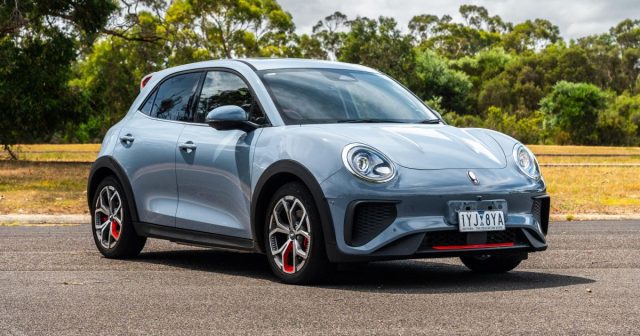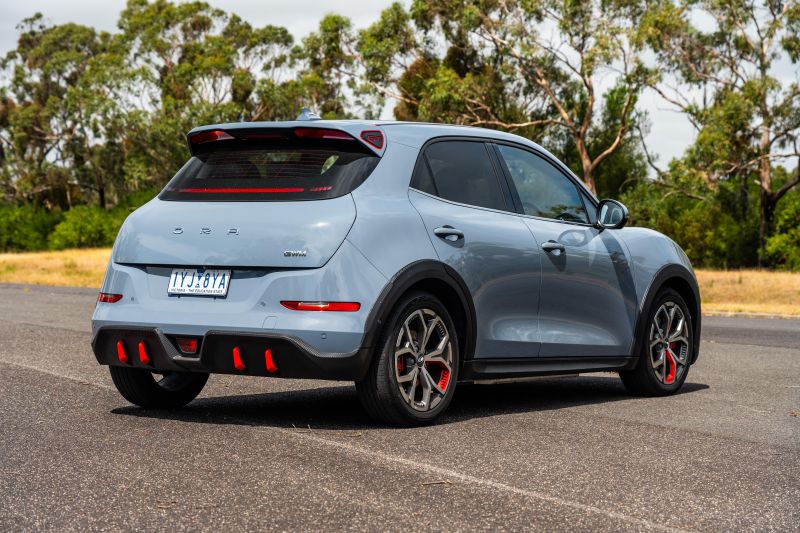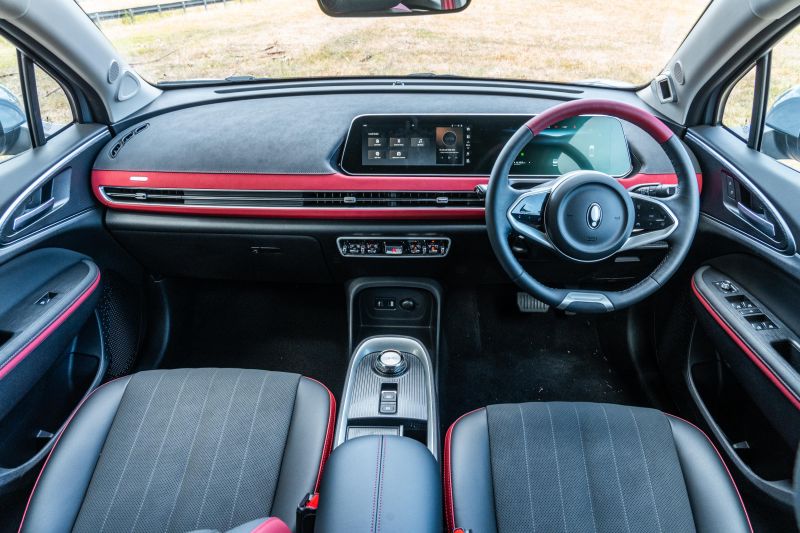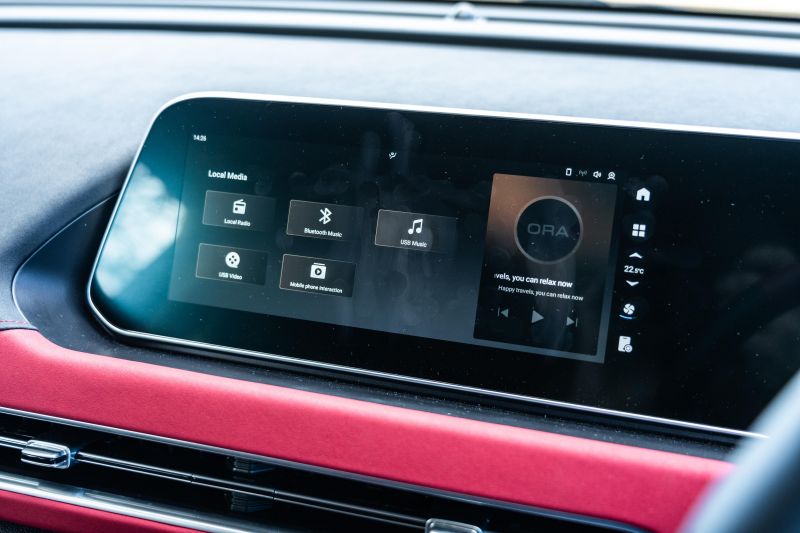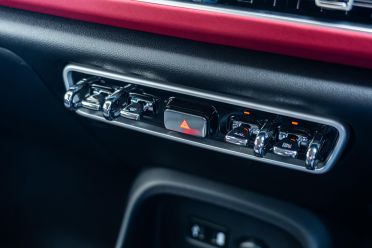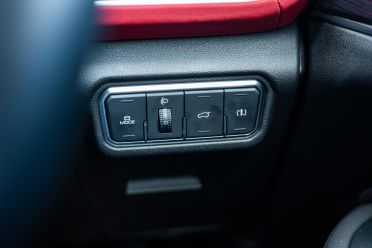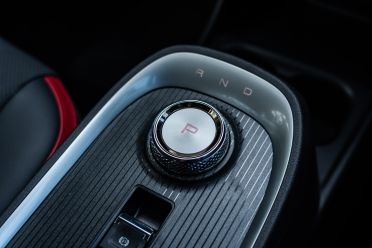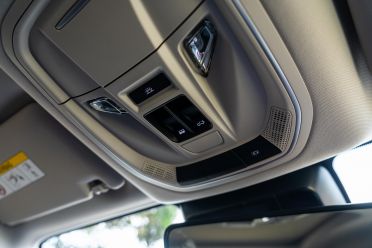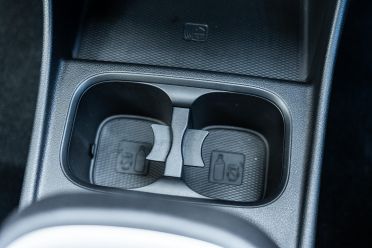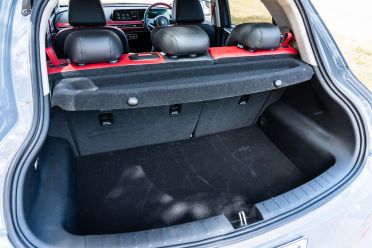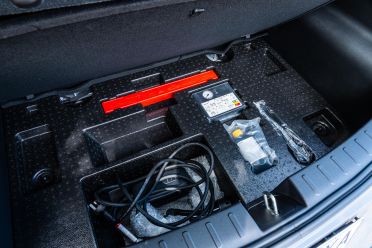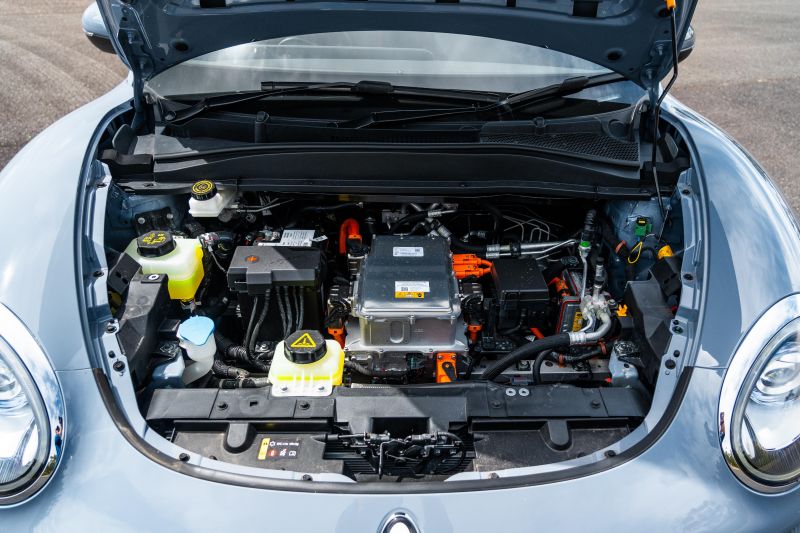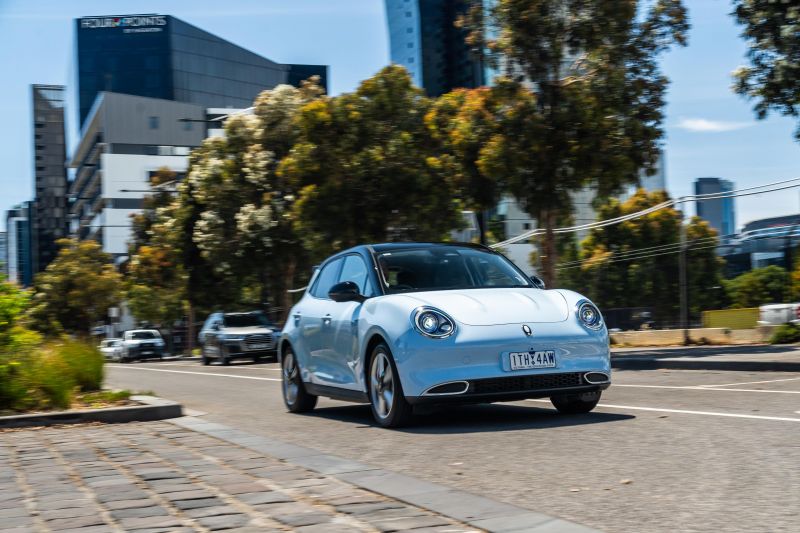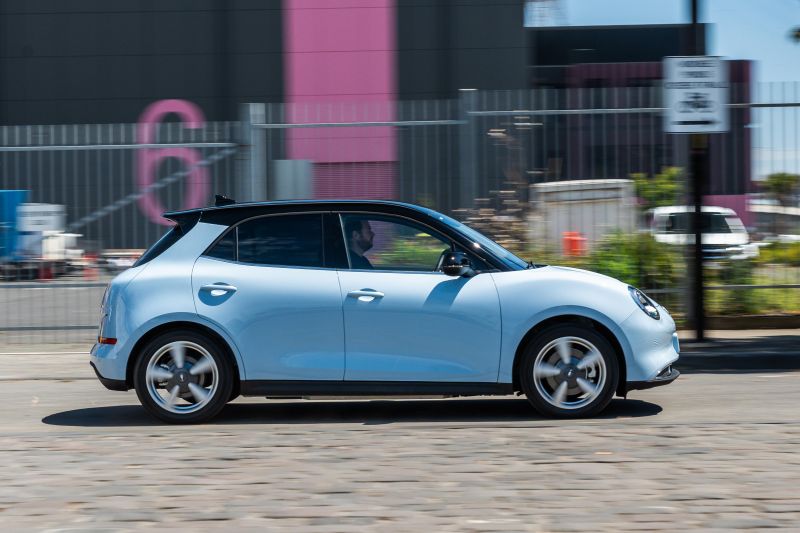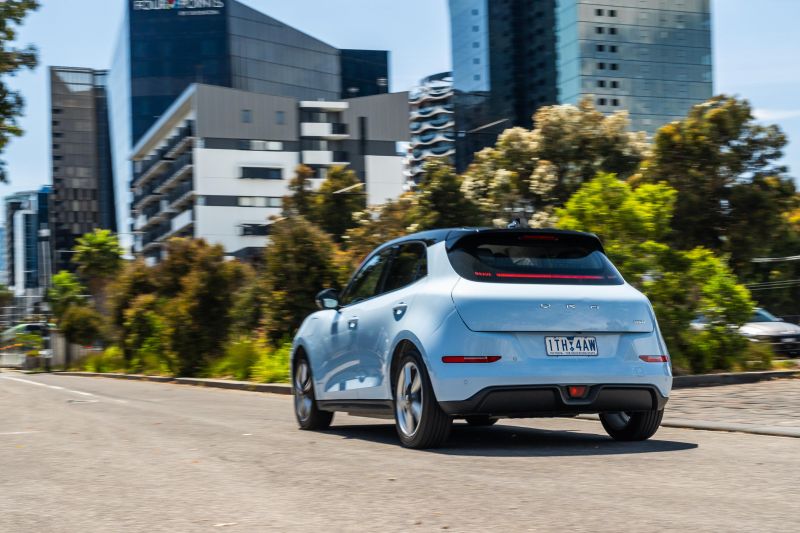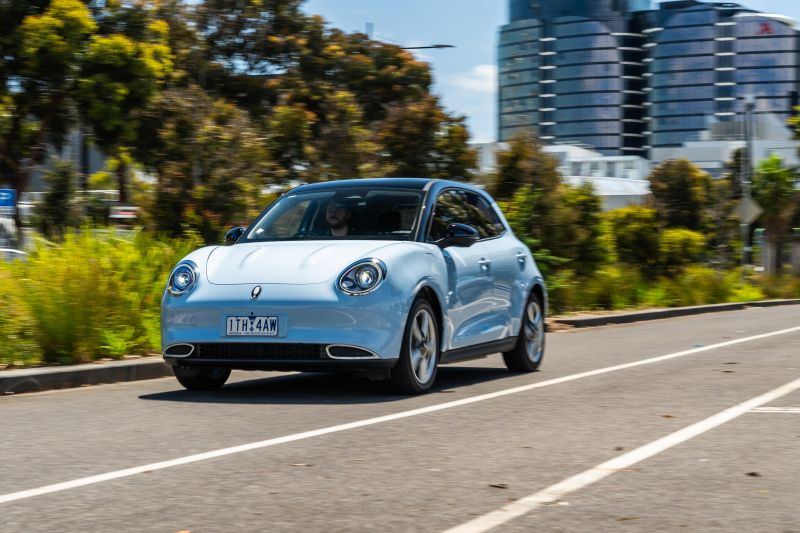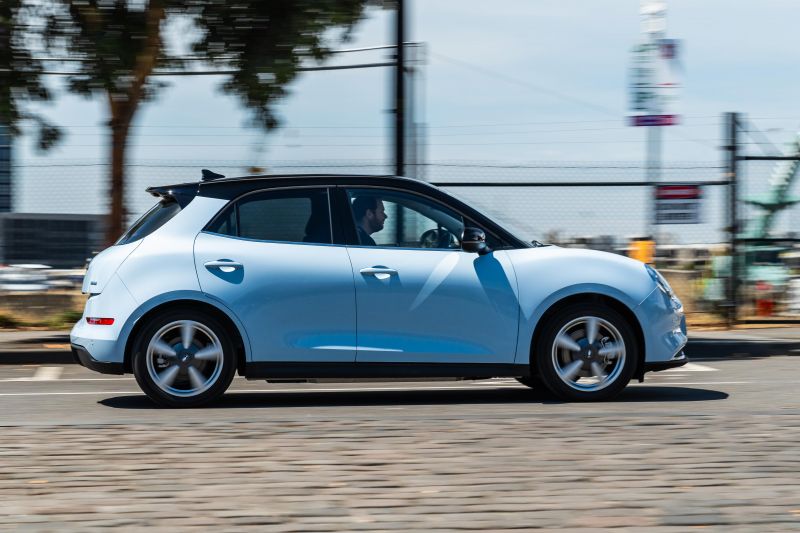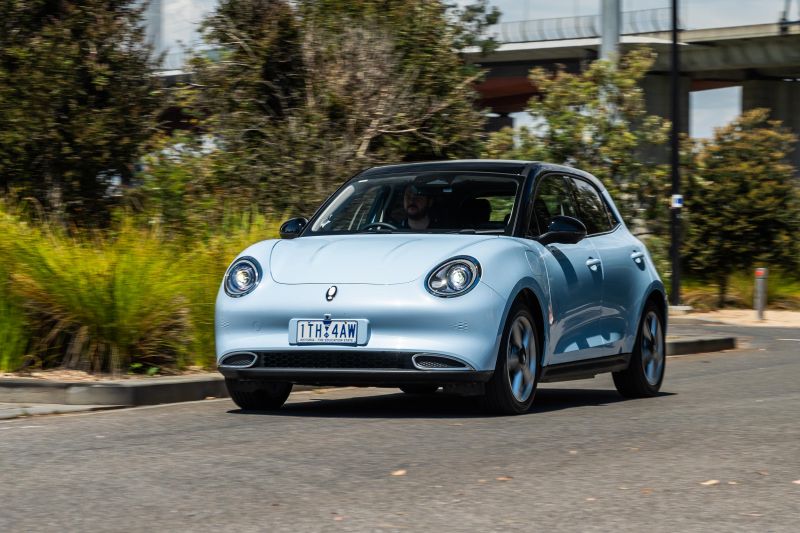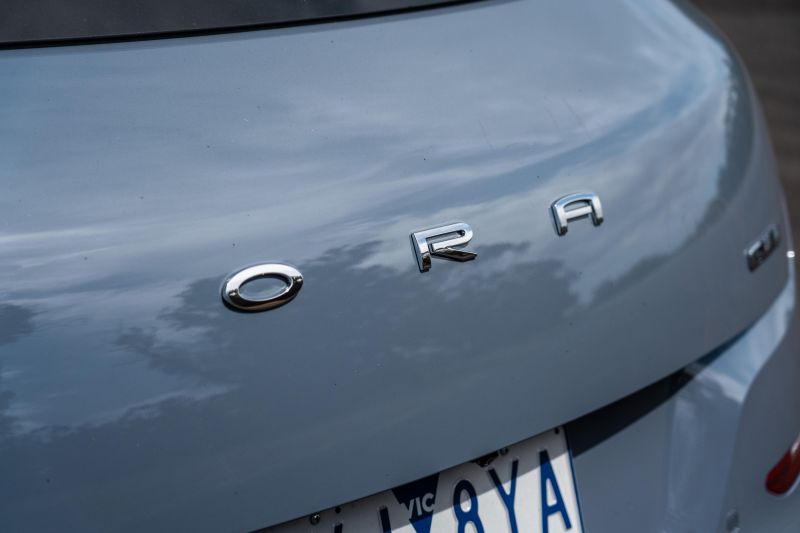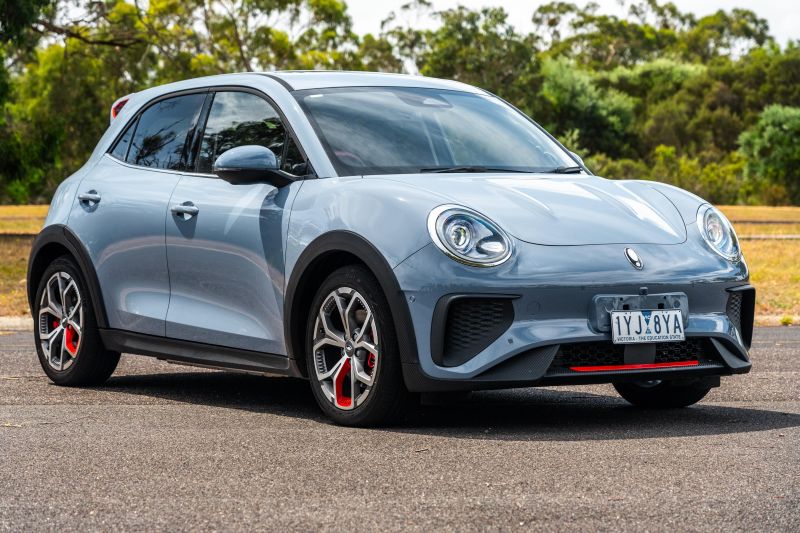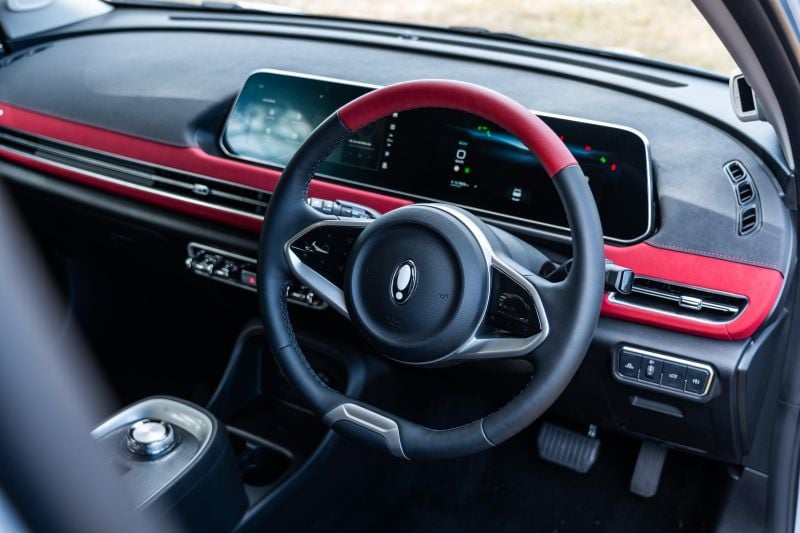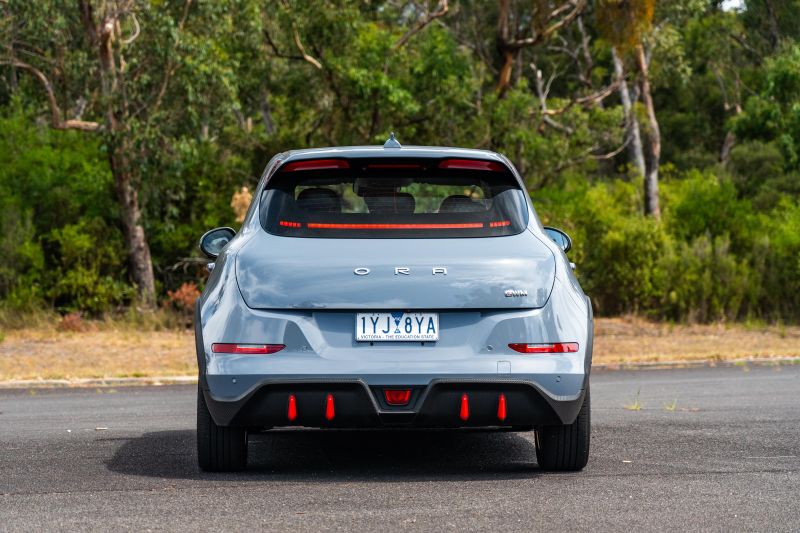The GWM Ora is currently one of Australia’s most affordable electric vehicles (EVs), going head-to-head with the likes of the BYD Dolphin and MG 4.
Although a majority of hype surrounding the Ora has been for the entry-level model with its alluring asking price, there are still a sprawling number of variants on offer.
On test here is the flagship 2024 GWM Ora GT which is fully loaded and kitted out with a range of extra equipment to make it look as sporty as possible – the only catch is its single front-mounted electric motor doesn’t produce any extra power or torque.
Is it worth taking a look at the flagship GWM Ora GT over its mid- and base-spec counterparts? Read along to find out.
How does the GWM Ora compare?
View a detailed breakdown of the GWM Ora against similarly sized vehicles.

GWM
Ora
How much does the GWM Ora cost?
There are currently four variants of the GWM Ora offered in Australia. On test here is the flagship Ora GT.
2024 GWM Ora pricing:
- 2024 GWM Ora Standard Range: $39,990
- 2024 GWM Ora Extended Range: $45,990
- 2024 GWM Ora Ultra: $48,990
- 2024 GWM Ora GT: $51,990
Prices exclude on-road costs
GWM is currently offering a range of drive-away offers on MY23 Ora models until March 31, 2024. Pricing varies from state-to-state, due to the range of incentives on offer.
To see how the GWM Ora shapes up against its rivals, check out our comparison tool.
What is the GWM Ora like on the inside?
Walking up to the GWM Ora GT you’re initially smacked in the face with the car’s out-there body kit. It’s not for everyone, given how polarising the Ora already looks, but it definitely attracts eyeballs from other drivers and pedestrians.
The car also has a cute lighting animation that plays when you unlock it. The animation sequence is very elaborate and takes a fair while to complete, similar to the GWM Haval Jolion Hybrid’s.
Although the Ora does look like a small (almost warm) hatch with its GT bits and pieces, it’s actually quite large. Throughout my time with our tester I parked next to a number of crossovers and SUVs and was surprised to see how similarly sized the Ora was with them. The most notable was a first-generation Nissan X-Trail.
Hopping into the Ora is pretty easy thanks to the raised seat hip point. You step across into the car rather than stepping up or down, which is nice for people with restricted mobility. The battery pack raises up the floor height meaning the seat is mounted higher.
Once you’re in you’re presented with a set of cool-looking faux leather seats that have a two-tone black and red finish with red ‘GT’ embroidery on the headrest. Even the seatbelts are red which is typically a sign of a performance model, though in this case it’s all for show.
Although the seats look cool they get hot and sticky very quickly given they’re faux leather.
Thankfully both the front seats are ventilated which was really helpful during the few really hot days recently in Melbourne. The front seats also offer heating and massage functions.
The driver’s seat is rather flat, which doesn’t help it feel like it matches the ‘GT’ name. It also lacks thigh support and side bolstering. Thankfully the driver’s seat does have six ways of electric adjustment, but surprisingly it doesn’t have adjustable lumbar support.
Ahead of the driver is a faux leather-wrapped steering wheel that also has a two-tone black and red finish. It does look sporty and feels nice in the hand. There’s also plenty of tilt and reach adjustment which means people of all shapes and sizes should be able to grasp the wheel comfortably.
Throughout the cabin of the GWM Ora GT there aren’t too many glossy piano black finishes, but it does feature on the steering wheel button panels. This is arguably one of the worst places for piano black because it gets grubby very quickly due to fingerprints and also easily scratched when cleaned.
Thankfully the steering wheel buttons are physical push buttons and not touch-sensitive units like a number of Volkswagen vehicles did.
Speaking of the steering wheel buttons, a lot of them have functions that aren’t necessarily clear at first. I found I needed to play around with them to see what function they actually served.
Behind the steering wheel is a 10.25-inch digital instrument cluster that’s clear and has a bunch of different graphics that change depending on the selected drive mode. It always shows the current speed in digital form largely and prominently.
Although the digital instrument cluster shows a lot of information the only configurable section is on the right-hand side. You can cycle through a range of informative pages including ones for the trip meter, average energy consumption, and media, among others.
I do wish there was a bit more configuration with the digital instrument cluster as there’s a large amount of negative space in its current look.
Moving across there’s a 10.25-inch touchscreen infotainment system that’s within the same housing as the digital instrument cluster.
It’s funny how times change but the Ora’s touchscreen infotainment system does look a little bit on the smaller side given a number of its rivals have touchscreens now measuring closer to 12 inches. The Ora’s touchscreen is also positioned a tad too far away from the driver which means you have to stretch a bit in order to reach the far corners.
There are a lot of menus and pages in the infotainment system which can make navigating it very confusing. You’re forced with getting acquainted with it however, as you’ll frequently be using it.
Thankfully despite these gripes it appears there is enough processing power for the infotainment system. This means it starts up pretty quickly and new pages load snappily.
Currently the GWM Ora offers both wired and wireless forms of Apple CarPlay, though I’d heavily recommend opting for the former and plugging in your phone. Wireless Apple CarPlay didn’t work for more than it did during my week of testing.
Thankfully wired Apple CarPlay with my iPhone 15 Pro Max had a considerably better and more reliable connection than its wireless counterpart as it didn’t randomly drop out whenever it felt like it.
Disappointingly the Ora doesn’t offer any form of Android Auto connectivity. This is really surprising given the demographic this car is being targeted at, as well as how common it is in the segment.
When connected Apple CarPlay takes up the entire 10.25-inch display, which is typical. What isn’t typical however is the lack of readily available switchgear to change the climate controls.
Sure there are piano key-style buttons for turning on the air-conditioning and the climate control system itself, but there aren’t any readily available buttons to change the temperature when Apple CarPlay is connected.
If you’re wanting to change the set climate control temperature with Apple CarPlay connected you first need to exit smartphone mirroring, and then you can open up a separate climate control page to reveal all the functions.
It’s worth noting if you don’t use smartphone mirroring there are widgets on the right-hand side of the touchscreen’s user interface that can be used to change the set temperature and fan speed. I wish these were displayed when Apple CarPlay is connected because it just adds so many unnecessary steps.
Looking around the cabin there are a range of cool-looking two-tone black and red finishes like the seats and steering wheel. There are also some soft touches on high traffic areas like the armrests and dashboard, though harder plastics are easy to find.
The GWM Ora’s interior is incredibly minimal with only a few visible buttons for key functions. Even the buttons for the drive modes and electric power switch are hidden off to the right-hand side of the steering wheel out of sight.
At the front of the centre stack are a set of two USB-A ports and a 12V socket, as well as a two cup holders which are a fair way from the front passengers. The cupholders are also located quite close to the floor so you might be knocking your water bottle with your leg quite regularly.
On the raised middle section of the centre console the Ora’s rotary gear selector takes centre stage with an electric park brake and wireless phone charger positioned behind it. The latter of these features doesn’t have a particularly grippy surface which caused my phone to slide around a bit with everyday driving, meaning it didn’t charge properly.
As standard the Ora GT receives a panoramic glass sunroof which is on the smaller side but still gives an airy feel to the cabin. It’s nice to be able to vent the hot air from the cabin when you first hop in.
Hopping into the second row there’s more space than I had initially anticipated in this small-but-not-really-small electric car. Leg, head and shoulder room are all great, though toe room is lacking just a bit.
Two adults will be able to fit in the second row completely fine, though trying to squeeze a third person could make things a little awkward given the middle seat is raised higher than the outboard ones.
Even in the second row the Ora GT retains the cool red ‘GT’ embroidery on the outboard rear headrests, as well as the red seatbelts for all three second-row seats.
In terms of second-row amenities there are unfortunately no air vents which is disappointing, though there is a USB-A port, as well as a fold-down centre armrest with cupholders. There are also the requisite ISOFIX child seat anchor points on the outboard second-row seats, as well as top-tether points on all three rear seats.
Around the back the GWM Ora GT has a powered tailgate with a hands-free function which is very handy for when you’ve got your hands full. Once the tailgate is open you might be a little disappointed with how much storage space is on offer.
GWM quotes an official boot capacity figure of 228 litres, which is on the smaller side for its segment, though it can be expanded to 858 litres by folding down the rear seats.
The boot opening is rather narrow and there’s a puny cargo cover that’s not attached to the tailgate and needs to be manually moved up and down when you’re wanting to load items.
The boot space itself is an awkward triangular-like shape meaning if you want to put a box in there you might have to fold down the rear seats as it may hit the tailgate.
Storage space isn’t the GWM Ora’s strong suit as there’s no front boot space area, which is disappointing but common in its segment.
Also common is the lack of a spare tyre. GWM does provide Ora owners with a tyre repair kit but this isn’t very helpful when you go on a road trip and get a puncture a fair distance from the nearest tyre repair centre.
What’s under the bonnet?
Only a one single electric motor option is available in the local GWM Ora lineup, however there are two different battery packs offered. On test here is the larger 63kWh nickel manganese cobalt (NMC) unit.
| Model | GWM Ora GT |
|---|---|
| Electric motor setup | Single front-mounted electric motor |
| Total system power | 126kW |
| Total system torque | 250Nm |
| Driven wheels | Front-wheel drive |
| Battery | 63kWh lithium-ion NMC |
| Weight | 1580kg (kerb) |
| Claimed range | 400km (WLTP) |
| Energy consumption (claimed) | 16.8kWh/100km |
| Energy consumption (observed) | 15.8kWh/100km (550km mixed driving) |
| Maximum AC charging rate | 11kW |
| AC charging time (10 to 80 per cent @ 11kW) | 6.5 hours |
| Maximum DC charging rate | 80kW |
| DC charging time (10-80 per cent @ 80kW) | 50 minutes |
To see how the Ora compares with its rivals, use our comparison tool.
How does the GWM Ora drive?
Starting up the GWM Ora is an interesting experience as you don’t really have to start it up at all. The car automatically turns on when you sit down on the seat.
After this there’s a strange startup montage with a range of different ambient sounds and a fish that slinkies across both the digital instrument cluster and touchscreen infotainment system.
Once the car has finished its strange startup montage you can then turn the dial into either reverse or drive and you’re on your way – it’s as easy as that!
Setting off in the Ora there’s progressive and linear acceleration which is reassuring from a driver’s perspective. Although the flagship GT on test here may look sporty, its single front-mounted electric motor doesn’t produce any more power or torque than the rest of the range.
The Ora GT is actually 0.1 seconds slower to 100km/h than the rest of the range. GWM claims a 0-100km/h sprint time of 8.5 seconds for the Ora GT, compared to 8.4 seconds for the rest of the range.
This flagship version of the Ora GT also has 20km less claimed range than the variants equipped with the 63kWh lithium-ion nickel manganese cobalt (NMC) battery. The GWM Ora GT has a WLTP claimed range of 400km, whereas the Ora Extended Range and Ultra have a WLTP range of 420km.
You likely won’t be too blown away or shoved too heavily into the seat by the Ora’s acceleration from a standstill. However, you will likely be winning a fair few informal traffic light races if you’re that way inclined due to the instantaneous way an electric car’s power and torque is delivered.
The Ora GT comes with a range of selectable drive modes including ‘Automatic’, ‘Normal’, ‘Eco’, ‘Eco+’, ‘Sport’, and ‘Individual’. The latter of these drive modes is unique to the flagship GT variant.
Cycling through these drive modes there are different sound clips that are played. They’re kind of cute when you first hear them, but after a while they get very annoying.
There’s also a launch control function that’s unique to the Ora GT, though I don’t really see the point in this given it’s not a performance model and doesn’t have any more power or torque than the regular model.
As standard there are a range of selectable regenerative braking modes available as well. My favourite was the ‘Strong’ setting which felt the most natural and confidence-inspiring.
The GWM Ora does technically have a one-pedal driving mode though you need to dive into a sub-menu on the touchscreen to turn it on every time you drive the car. The one-pedal driving system will also disengage if you turn cruise control on and then off.
Like a range of other one-pedal driving systems, the Ora’s does thankfully bring the car to a complete stop, though it does rock a tad which is a little unnerving.
Even more unnerving is the fact the brake lights illuminate while you’re slowing down but then switch off as you come to a stop. This could be dangerous as people driving behind you mightn’t realise you’ve come to a complete stop.
In order to have your brake lights illuminated when at a complete stop with the one-pedal driving system activated is to actually depress the brake pedal. This makes the point of the one-pedal driving system completely pointless.
Around town the Ora GT’s steering errs on the lighter side but is still direct and easy to control. There are three different steering modes – ‘Comfort’, ‘Normal’ and ‘Sport’ – which artificially either lighten or weigh up the steering depending on your personal taste.
As your steering around corners there’s an annoying sound-view camera popup that displays and cuts out your music. Thankfully you’re able to switch this off in a settings menu.
In addition to the aforementioned surround-view camera, the Ora GT comes with front and rear parking sensors, as well as dipping side mirrors. The latter of these is incredibly helpful when parallel parking as they clearly show where the kerbs are.
Don’t be expecting the Ora GT to be incredibly dynamic. Due in part to its heavy battery it likes to lean a bit in the corners. You’ll also be sliding around a bit in the driver’s seat due the lack of lateral support.
Something that did surprise me about this car is how compliant and resolved its suspension is around town. It’s on the softer side but isn’t anywhere near as bouncy or unwieldy as other GWM-branded vehicles I’ve sampled in the past.
The GWM Ora’s suspension system genuinely one of the best I’ve experienced from the Chinese carmaker thus far. It’s a good sign for future vehicles which will hopefully receive further tweaks and refinements.
Ramping up the speed in the Ora GT is fine but you start to reach the upper limits of what the single electric motor is capable of. It’s safe to say this car is better suited to being in the city than out on the open road.
At higher speeds there’s a considerable amount of road noise which is even more noticeable given electric cars are so inherently quiet. There’s also a bit of wind noise than can be heard from around the side mirrors.
Interestingly the Ora GT gets blown around a little bit on the highway. I wasn’t really expecting to see anything like this in a car that weighs close to 1.6 tonnes.
On the safety front the Ora’s lane-keep assist and emergency lane keeping systems can be really intrusive. Over speeds of 60km/h they switch on and continuously jerk at the steering wheel to keep you within the lane even though you’re nowhere near marked line.
If you leave the lane-keep assist system to its own devices it’ll pinball endlessly in the lane. Thankfully you can turn it and the emergency lane keeping systems both off in a settings menu.
The Ora GT’s adaptive cruise control system is also a little annoying as it likes to slow down considerably when it detects a car ahead. This gripe is common with all adaptive cruise control-fitted GWM vehicles.
The adaptive cruise control system gets even more frustrating when the intelligent cornering is turned on as it will slow down the car when you’re going around a bend. The bend doesn’t even have to be very sharp for it to start slowing the car down, which will inevitably frustrate the cars behind you.
Another gripe with the Ora’s cruise control system is there’s no proper resume function. The provided stalk behind the steering wheel has a function that allows you to set a new speed for the cruise control, but there’s no function to resume to previously set speed.
Lastly, the cruise control system’s set speed can only be adjusted in increments of 5km/h, which drives me utterly wild. You’re able to set your speed at 82km/h, for example, and it will stay there, but if you adjust the set speed it will either go to 80km/h or 85km/h. There’s no way to get back to 82km/h unless you cancel cruise control and then reset it exactly at your desired speed.
What do you get?
The GWM Ora is available in four different trim levels in Australia. On test here is the flagship GT variant.
Ora Standard Range and Extended Range highlights:
- 18-inch alloy wheels
- Automatic LED headlights
- Automatic high-beam
- Rear fog lights
- Privacy glass
- Heated side mirrors
- 10.25-inch digital instrument cluster
- 10.25-inch touchscreen infotainment system
- Wireless Apple CarPlay
- Wireless phone charger
- 6-speaker sound system
- Climate control
- Proximity entry and keyless start
- Faux leather-wrapped steering wheel
- Auto-dimming rear-view mirror
- Leatherette seats
- 6-way power driver’s seat
- 4-way power passenger seat
- Auto-dimming rear-view mirror
Ora Ultra adds:
- Hands-free powered tailgate
- Panoramic sunroof
- Heated steering wheel
- 6-way powered driver’s seat with memory
- Heated, ventilated, massaging front seats
- Power-folding mirrors with memory
- Auto parking assist
GT adds:
- Unique 18-inch alloy wheels
- Unique bumpers and grille
- Red brake calipers
- Individual driving mode
- Launch control
- Front cross-traffic alert
Is the GWM Ora safe?
GWM’s electric hatchback received a five-star ANCAP safety rating, based on Euro NCAP tests conducted in 2022.
The GWM Ora received an adult occupant protection rating of 92 per cent, a child occupant protection rating of 84 per cent, a vulnerable road user protection rating of 74 per cent, and a safety assist rating of 93 per cent.
Standard safety equipment across the Ora range includes:
- 7 SRS airbags
- Autonomous emergency braking (AEB)
- Pedestrian detection
- Cyclist detection
- Junction assist
- Blind-spot monitor and assist
- Lane departure warning
- Lane-keep assist
- Rear cross-traffic alert
- Reverse collision warning
- Traffic sign recognition
- Camera-based driver monitoring
- Reversing camera
- Surround-view camera
- Adaptive cruise control with stop and go
- Tyre pressure monitoring
Ora Extended Range adds:
- Front parking sensors
- Auto parking assist
Ora GT adds:
- Front cross-traffic alert
How much does the GWM Ora cost to run?
The GWM Ora is backed by a seven-year, unlimited-kilometre warranty like the wider range. The battery is covered for eight years.
Five years of roadside assist and five years of capped-price servicing are also included.
The first five services for the GWM Ora are capped at $99. Logbook servicing is required every 12 months or 15,000km, whichever occurs first.
CarExpert’s Take on the GWM Ora
The GWM Ora is a fantastic entry-level electric car for those looking to dip their toes into owning an EV. It’s very smooth to drive and has one of the most comfortable suspension tunes I’ve experienced in a GWM-branded product to date.
The flagship Ora GT on test here is also very well equipped and provides polarising looks that would typically denote more power and more dynamic driving experience.
With that in mind however don’t go expecting the Ora GT to be a sports car. It’s technically slower from a standstill to 100km/h and also has 20km less claimed range than the more affordable Ora Extended Range and Ultra variants.
All that extra GT kit is just for looks which is a tad disappointing because I’m not certain if it even looks any good. It certainly attracted a lot of attention regardless.
If you’re after a properly fast small EV you’d be best to consider the MG 4 XPower which is only $8000 more expensive than the Ora GT at $59,990 before on-roads. It also brings an eye-watering quick claimed 0-100km/h sprint time of 3.8 seconds which is 4.7 seconds quicker than the Ora GT.
Even if you’re not after outright straight-line speed, the non-performance MG 4 variants are rear-wheel drive which provides a more engaging driving experience than the front-wheel drive GWM Ora.
That’s not to say the GWM Ora isn’t an EV you should consider. It just makes the most sense in the more affordable entry-level forms where sporty dynamics aren’t a necessity.
Click the images for the full gallery
MORE: Buy a GWM Ora
MORE: Everything GWM Ora















